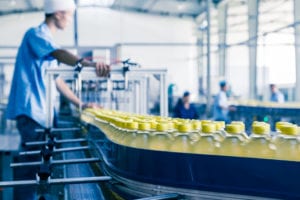The UK government recently released guidance for employers on creating a safe workplace. The guidance is in line with reports from facility management and workplace consultancies who have already worked on similar material, eager to share their knowledge and expertise to help tackle the question of re-opening workplaces in the UK and around the world. Such advice is critical to ensuring organisations put together effective policies and plans to bring people back to the office safely.
The task facing all businesses is how to make our working spaces resilient. Adaptability has always been necessary to business continuity, particularly in the age of rapid change we are set to enter. While the challenge is immense, we have the tools and skills required to face it head on and revolutionize the working world. The need for change is often the most powerful driver, by granting us the opportunity to conduct a long-overdue transformation in the direction of sustainability for our built environment. And, whilst every sector faces unique challenges at this moment and the market responds to environmental priorities by designing smarter buildings for the future, we cannot leave behind the buildings that already exist. The buildings of the recognizable skylines of central business districts across the globe are in need to be retrofitted to be brought along the sustainability journey whilst implementing sustainability models of space and energy management. In every discussion of the path to recovery, it is paramount that every path is paved green.
First and foremost, our focus must be on long term change. Short term reactionary efforts will be required, but the emphasis must be on building a framework that has flexibility built into its core. The needs and demands of the workforce, the regulations imposed, and the safe operation of workplaces, will all need to be highly dynamic to deal with the evolving landscape. Sites and working areas may have to be shut down or reduce occupancy at short notice, while also able to accommodate larger numbers as restrictions relax. In short, the workplace of the future must incorporate change into every facet of its operation.
Previous trends such as remote and flexible working will be hyper-accelerated as more and more look to work from home if they can. However, the need for collaboration and co-location will never be replaced as the fastest and easiest method of doing what people do best, working together! While some organisations may choose one pole or the other, most will have to adapt in order to continue providing office space to those that need it, but measures will need to be enforced to protect everyone’s health and wellbeing. Hot desks that have been utilised will need to be identified for aggressive cleaning in between occupants while permanent desks arrangements may require checkerboard patterns and spacing to provide everyone with sufficient distancing.
A great option is also to create bubbles and neighborhoods that only interact with members of their own group with little external contact, but to enforce this, areas will have to be re-assigned and made unavailable to ‘outsiders’. Historic occupancy data for areas will be invaluable if any occupant is discovered to be a point of risk, analyzing which desks were occupied in the vicinity over a certain time period will allow a form of anonymous contact tracing to take place. All of these measures are building blocks to the continuity of office environments which will transform but remain a necessity for the best and most productive creativity to take place. All of these measures will need to be enabled by the right tools.
To achieve true adaptability, we must look to the latest technology. While technology undoubtedly allows us to unlock new and game changing solutions, we consider which ones we choose and how we implement them. Tracking office occupancy will be crucial – data from IoT devices married with data analytics provides such insight, but it must be implemented in combination with the consideration of cybersecurity and privacy of individuals. Done right however, these technologies lead to valuable results that not only tackle our current challenges, but help build a platform that can inform long term commercial retail estate decisions. Through the use of occupancy analytics, we can drive much higher efficiency in usage, reducing overheads. Space analytics can also be harnessed to drive decision making to keep occupants at safe distances when or if required as one component of a wellbeing strategy
Alongside embracing technology, a people centric approach is critical. The wellbeing of our workforce must be front and centre in everything we do. This encompasses many things, from individual feedback on safety and productivity, to personalised HVAC settings. Steps can also be taken to back up feedback, by monitoring, logging and cross-referencing advanced datapoints. Carbon dioxide levels, for example, can have hugely negative impacts on productivity, contributing to an overall sense of discomfort in the office. Having insight into these environmental conditions allows iterative building improvements to be made and wellbeing to be boosted.
While data and analytics help us solve occupancy and wellbeing concerns, other issues must be addressed. As changes or decisions are made, updated information has to be communicated to all the relevant people. As we all know, updates are easily missed, so in order to ensure the right information reaches the right people at the right time a dynamic and modern approach is required. On this front the utility of mobile app notifications is incredibly effective. By deploying a comprehensive enterprise application, we can drive engagement within the workforce and ensure information is received and understood. Once again this provides many additional advantages, such as indoor wayfinding and centralised access to workplace services. Most significantly this improves your organisations aptitude to adapt and push necessary changes out with rapid adoption.
While the technology is new, Schneider Electric has always been committed to improving the workplace, with repeated recognition as industry leaders in intelligent building software. For us, this is simply a time for renewed emphasis on our approach.
- Employee well-being, attracting a diverse workforce and productive agile workplaces are critical for winning companies.
- To address the challenges of the competitive commercial office landscape, it’s incredibly useful to collect and analyse workplace data.
- Schneider Electrics EcoStruxure technology, sensors and applications are being used to reduce energy costs, and create a more manageable, resilient, responsive, employee-centric workplace.
We are here to help with our EcoStruxure Workplace Advisor which has recently been recognised with awards from IoT Breakthrough and Buildings.com. The insights and analytics from Workplace Advisor can bring breakthrough resilience and efficiency to commercial real estate, and alongside the EcoStruxure Engage Enterprise App can drive better engagement with the people in your organisation.
Considered deployment of IoT technology, analysis of the subsequent data, and vitally, empathetic, people first responsiveness with constant communication flow, will build a better more adaptable workplace. We must not be satisfied with step change or iterative models, there is a real, once in a generation opportunity to create significant change as we re-think the workplace to effect human well-being, resilience, efficiency and sustainability. I’m excited for where we’re headed and want to hear from you on your unique situations, so what are your challenges and what can we do to help?
If you want to learn more about what the future of workspace might look like – read this blog.



